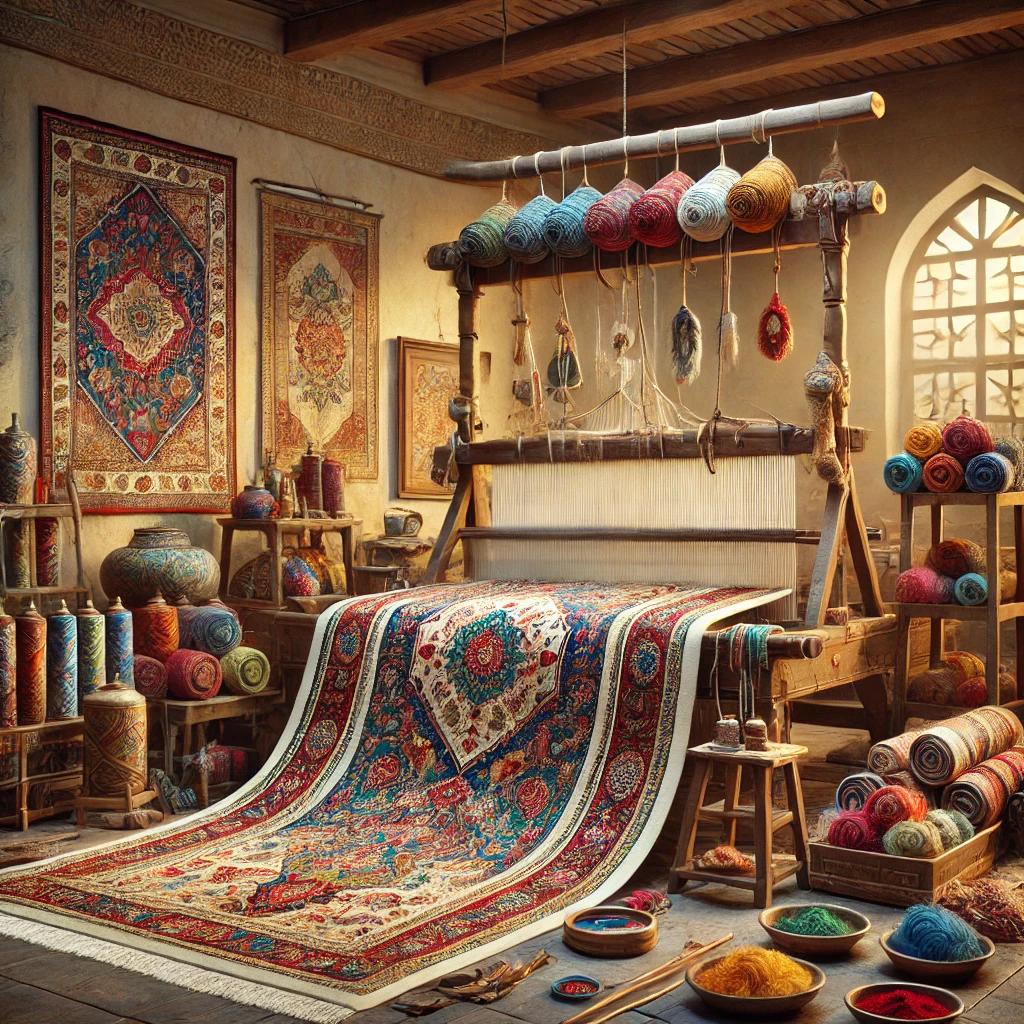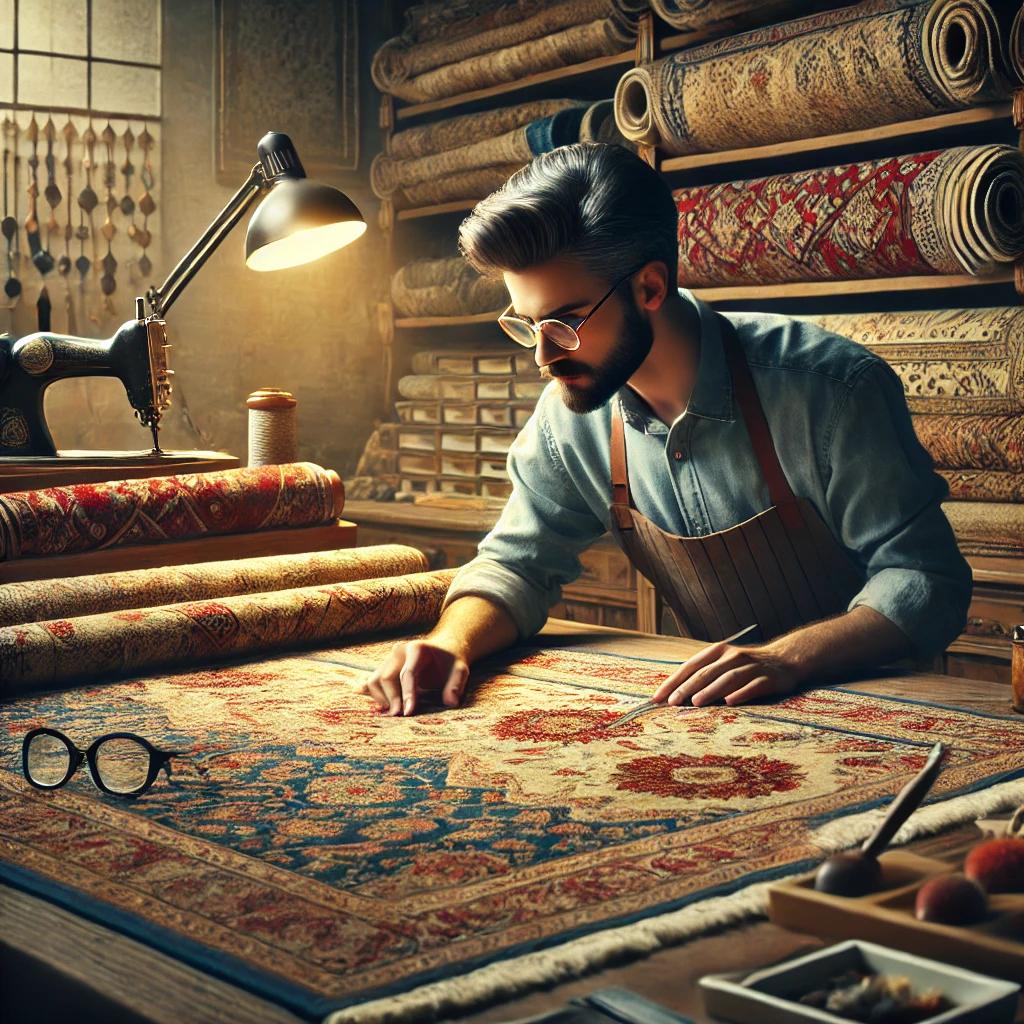
The Ultimate Persian Rug Buying Guide: Everything You Need To Know
Estimated reading time: 7 minutes
Key Takeaways
- Persian rugs are not just decorative pieces; they are investment items with a rich history.
- Understanding various types and styles is essential for selection.
- Authenticity is crucial; check for materials, construction, and provenance.
- Pricing should consider age, condition, and rarity.
- Proper care and maintenance can prolong the life of your investment.
Table of contents
- Understanding Persian Rugs
- Determining Rug Age
- Evaluating the Back of a Persian Rug
- Identifying Top Persian Rugs
- Pricing Your Persian Rug
- Finding the Best Deals: Discount Rug Outlets
- Proper Care and Maintenance
- Conclusion
- Frequently Asked Questions
When it comes to home decor, few items rival the beauty and richness of Persian rugs. This Persian rug buying guide serves as a thorough, authoritative resource to help you navigate the complexities of purchasing these exquisite pieces. Understanding the intricacies of Persian rugs is crucial for making informed decisions that can impact not only the aesthetic quality of your home but also your financial investment.
In this guide, we will explore how to evaluate authenticity, understand pricing structures, and select the right rug that fits your needs and style.
Understanding Persian Rugs
Persian rugs are renowned for their artistry and heritage. Originating from Iran, these rugs boast a rich history that dates back thousands of years. This cultural significance sets Persian rugs apart from other types of rugs. They embody craftsmanship, storytelling, and cultural expressions.
Top Persian Rugs: Types and Styles
- City Rugs:
- Tabriz: Known for intricate designs and a wide range of colors.
- Isfahan: Features floral patterns and complex designs.
- Tribal Rugs:
- Qashqai: Celebrated for bold geometric patterns and rich colors.
- Bakhtiari: Recognized for their use of vibrant colors and striking motifs.
Common Materials
Persian rugs are crafted from various materials, including:
- Wool: Durable, soft, and excellent for everyday use.
- Silk: Luxurious and glossy, perfect for display pieces.
- Cotton: Often used as a foundation, providing strength.
For more details on the types and characteristics of Persian rugs, visit Nazmiyal Antique Rugs.
Determining Rug Age
Understanding the rug age is vital for judging its value and authenticity. Typically, older Persian rugs are more highly valued, especially when in good condition.
Tips for Determining Rug Age
- Examine Color Fading: Authentic aging will exhibit gradual fading.
- Inspect for Wear: Significant wear can indicate age.
- Check for Repairs: Well-done repairs can enhance a rug’s value.
Additionally, always request provenance and documentation from reputable sellers to validate claims about a rug’s age. https://buyprg.com/how-to-identify-an-authentic-persian-rug-a-buyers-guide/
Signs of Authenticity
- Natural Fibers: Look for wool and silk instead of synthetic options.
- Hand-Knotted Construction: This signifies quality craftsmanship.
- Historically Consistent Dyes: Organic dyes will appear more muted and harmonious, while synthetic dyes can look overly bright. https://buyprg.com/how-to-spot-a-high-quality-persian-rug-a-buyers-guide/
Red Flags of Reproductions
- Use of synthetic materials
- Glued fringes
- Bright, artificial colors
For more information on evaluating rug age, visit Catalina Rug.
Evaluating the Back of a Persian Rug
When purchasing a Persian rug, inspect the back of the rug closely. This step is crucial for assessing the quality of craftsmanship.
Key Indicators from the Back of a Rug
- Visible Tight Knots: High-quality rugs display well-defined knots.
- Even Weaving: Uniformity in weaving signals good craftsmanship.
- Irregularities: Any discrepancies can indicate machine-made vs. handmade.
Authentic handmade rugs will have complex patterns and consistent knots visible from the back. According to Arsin Rug Gallery, inspecting the back can provide essential clues about the rug’s quality.
Identifying Top Persian Rugs
Identifying top Persian rugs involves looking at various characteristics that determine their value.
Characteristics of Top Persian Rugs
- High Knot Density: Measured in knots per square inch, higher density indicates better quality.
- Intricate Patterns: Renowned for their fine detailing and beautiful color combinations.
- Quality Materials: Rugs made from pure wool or silk are more desirable.
Recommendations by Type
Rug types can cater to different budgets:
- City Rugs: Generally more expensive due to intricate weaving.
- Tribal Rugs: Often can match or exceed city rug values based on rarity and artistry.
For a comprehensive overview of Persian rug characteristics, explore Nazmiyal Antique Rugs.
Pricing Your Persian Rug
Understanding the economics behind rug age, rarity, condition, and authenticity heavily influences the pricing of a Persian rug.
Factors Influencing Price
- Age: Older rugs, in good condition, tend to be more valuable.
- Rarity: Unique designs or limited production increases value.
- Condition: Well-maintained rugs command higher prices.
- Authenticity: Provenance documents boost a rug’s market value.
Assessing Fair Prices
- Dealer Comparisons: Check prices across multiple dealers.
- Certifications: Request verification of authenticity and origin.
- Market Trends: Understanding current trends can assist with pricing expectations.
Understanding these factors is key for recognizing fair prices. https://buyprg.com/why-handmade-rugs-are-a-better-investment-than-machine-made-rugs-2/
Finding the Best Deals: Discount Rug Outlets
Exploring discount rug outlet stores can yield great finds, but it’s important to tread carefully.
Quality Checks at Discount Outlets
- Always inspect the back of the Persian rug.
- Avoid any synthetic reproductions; these can diminish value.
- Look for stores with clear return policies and authenticity guarantees.
Benefits and Risks
- Benefits: Lower prices and a wider variety can make discounts appealing.
- Risks: Potential authenticity concerns and variable quality can arise.
For more information, check back to Arsin Rug Gallery.
Proper Care and Maintenance
Taking care of your Persian rug involves regular maintenance.
Storing Wool Rugs
- Dry Conditions: Always store in a dry, cool, clean environment to prevent damage.
- Breathable Wrapping: Use materials that allow air circulation.
Cleaning and Maintenance Tips
- Regular Vacuuming: Ensures dirt and debris don’t accumulate.
- Prompt Stain Removal: Address spills immediately.
- Professional Cleaning: Seek expert help periodically to maintain the rug’s integrity. https://buyprg.com/persian-rug-cleaning-guide
Seasonal checks and routine maintenance will prolong the longevity of your investment. https://buyprg.com/storing-wool-rugs-best-practices
For more on caring for wool rugs, visit Arsin Rug Gallery.
Conclusion
This Persian rug buying guide has covered essential components, highlighting the importance of authenticity checks, rug age considerations, pricing strategies, and proper care.
With this knowledge, you can confidently venture into the world of Persian rugs and make informed purchasing decisions. For personalized assistance, consider visiting reputable outlets or consulting with experts for tailored guidance.
Frequently Asked Questions
What makes a Persian rug authentic?
Authentic Persian rugs are hand-knotted, made from natural fibers, and typically include traditional motifs and designs.
How can I tell if my Persian rug is valuable?
Factors like age, condition, rarity, and the materials used contribute significantly to the value of a Persian rug.
What is the best way to maintain my Persian rug?
Regular vacuuming, immediate stain treatment, and periodic professional cleaning are essential for maintaining its beauty and longevity.
Where can I buy authentic Persian rugs?
Look for reputable dealers or galleries that provide documentation of authenticity and a solid return policy.


